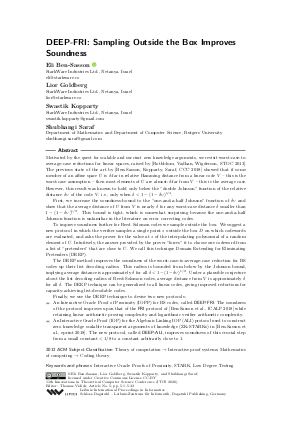LIPIcs.ITCS.2020.5.pdf
- Filesize: 0.69 MB
- 32 pages

 Creative Commons Attribution 3.0 Unported license
Creative Commons Attribution 3.0 Unported license











Feedback for Dagstuhl Publishing